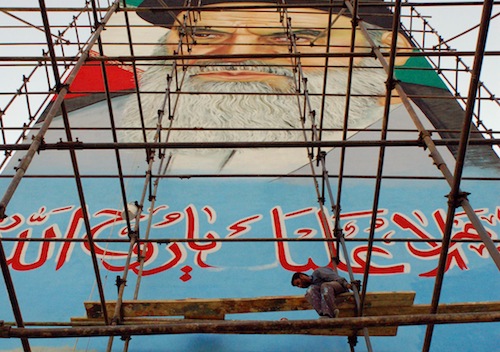

A few years ago, on my way to Beirut's Rafic Hariri International Airport -- an Amr Diab song sizzling from the taxi's speakers -- I sat back and enjoyed the ride. My passenger's side view was dotted with kids playing, soldiers smoking casually, the occasional tank hidden in the side streets, and giant posters of Mahmoud Ahmadinejad. Wait! Was it really the image of Iran's president lining the boulevard of Lebanon's capital, or was I experiencing a mirage? It was then and there that I first awakened to the complete complexity of the Middle East and the absolute lack of understanding most of us outsiders (meaning anyone not born and bred there) possess when dealing with it.
The MENA is a region that cannot be judged by its leaders, but also cannot be separated from their actions. Societies there exist in those fantastic shades of grey, occupying the huge margin between good and evil. And just as we in the U.S. do not appreciate being held accountable for some of the bad decisions our leaders have made throughout the years, so the people of that diverse area we call the Middle East and North Africa, cannot be regarded as the eager participants in their countries' policies.
Yet there are a few select "outsiders" who have spent enough time truly soaking up knowledge in the region and therefore comprehend it to their very core. One such phenomenon is filmmaker Petr Lom, who was born in Prague and grew up in Canada. Lom gave up his university career -- he has a Ph.D in political philosophy from Harvard -- to pursue 
It is for those exact reasons that I wanted to watch Lom's Letters to the President at this moment in time. Just as in 2008, there is a current risk that Iran may be attacked. And just as when Lom's film was shot before the 2009 elections, so some big (albeit not very new) decisions are being made through Iran's current parliamentary elections. I could not ignore the coincidences, plus the title alone inspired in me infinite curiosity.
Lom explains why Letters to the President remains so current, even four years later:
Despite the fact that the film was shot over the course of 2008, I don't think it is an outdated film, to the contrary: the deceptive manipulation to which the Iranian population is subject, remains. The only difference now, is that since the 2009 elections, it has become much more apparent than when I worked on the film how the Iranian regime really is an emperor with no clothes: the brute force behind the clerical regime is much more apparent than ever.
Letters to the President turned out to be a film which undeniably proved that there are as many opinions as there are people in the Islamic Republic of Iran, a population last estimated at 77 million. Yet the one thing most Iranians can agree upon is that they are lacking something in their life. So far, pretty common in today's world, right? But the Iranians have a government agency for that, a place where each citizen can address his or her lament and ask Mr. Ahmadinejad for help. Literally. By mail, text or email, the complaints of the populous Shia nation are sent to its political leader, who set up a bureau in charge of answering them, the "Presidential Letter Processing Center." Letters are answered by Basij students -- the paramilitary volunteer militia established in the late '70s by Khomeini -- and are segregated by sex, women answering the letters of other female and males answering those of men.
Obviously, this is a set-up that cinematically runs the gamut from utterly touching, to charmingly funny. In one scene, as Ahmadinejad's convoy rides through the streets of his hometown of Aradan, a sea of people shove letters, notes, little scraps of paper at him, knowing that there is a 76 percent chance (actual government statistics) they will hear back from his office. Little girls ask for money to make a pilgrimage, women want money to feed their family, men ask for a job that will pay more, well, you get the drift. Seems like the perfect setup, by a president who has called himself the servant of his people and who easily blames the U.S. for all of Iran's struggles.
Ahmadinejad himself is the kind of subject filmmakers can only dream about. He hugs children, rushes to the aid of fainting women, and makes broad unsubstantiated statements to the tune of "there are 40 million homeless and unemployed people in the U.S. and the government there cannot even feed them, as we instead do here for our people." He's also a strong believer in the coming of the "Mahdi" -- a mythical Shi'ite Islamic messiah -- which Ahmedinajad is convinced will appear during his presidency, and is being heralded by the unrests of the Arab world.
In Lom's wise last words:
It is important to resist, particularly the American urge to demonize the Iranian people. That is, I hope, still the most relevant part of my film: To show what a difficult time ordinary Iranians have just getting through life.
To view Letters to the President visit Transit Media online.
Top image, billboard of Khomeini in Tehran, and portrait of Petr Lom, all courtesy of the filmmaker. Used with permission.
